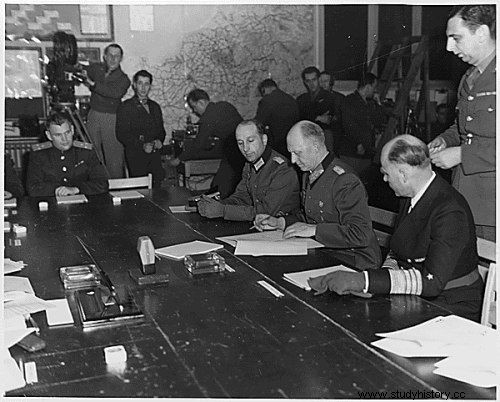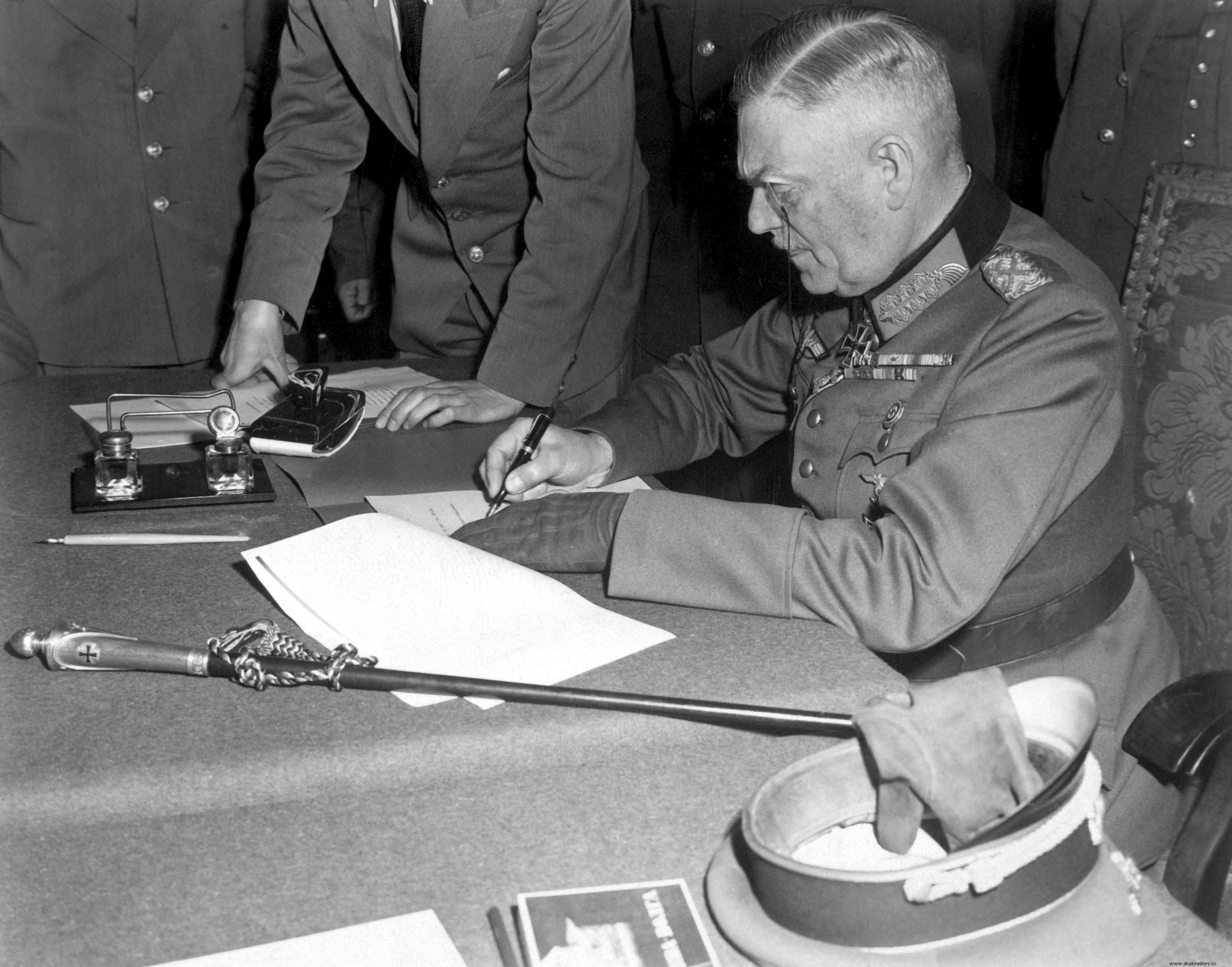The unconditional surrender of Germany on May 7, 1945 came as no surprise to anyone. The Allies began to prepare for it as early as 1943, when the heads of the Ministry of Foreign Affairs of the Big Three appointed the European Advisory Commission. One of her tasks was to compose the text of the German surrender. Two years were enough for the Nazis to get the whole of Europe back from the hands of the Nazis, but not for a group of politicians to agree that all versions of the document were satisfactory. As a result, on May 7, only the Germans were ready to lay down their arms. Allied High Command, meanwhile, had to ... invent something while you wait.
Negotiations on the content of the act of surrender in London lasted most of the winter and the entire spring of 1945. Each of the Allied countries and governments wanted to add something. The British doubted whether it would be possible to sign one document with the Germans at all.
The Czechs demanded that German responsibility for starting the war be included in the act of surrender. The Belgians and the Dutch applied for their participation in the occupation of Germany to be taken into account. The Yugoslavs wanted to wait for their internal political settlements to be settled, and the Greeks wanted the addition of a point stating that German military equipment left in Greece would become the property of the local government.

Generaloberst Alfred Jodl probably did not even suspect in what haste the act of surrender of the Third Reich was prepared ...
A compromise seemed close, but at the beginning of May - due to procedural errors and comments made literally at the last minute - the final text of the document was still non-existent.
Meanwhile, the Germans were ready to surrender. The High Command of the Expeditionary Forces (SHAEF), headed by General Eisenhower, did not intend to wait:after all, the stakes were the lives of the next Allied soldiers, clashing with the remnants of the Wehrmacht and Volkssturm.
This time, the text of the capitulation was not commissioned to a group of experts and diplomats, but basically to one soldier - a British operational officer in the Allied High Command, Colonel John Counsell. Nota bene this member of the SHAEF planning team in civilian life was ... a theater manager.

Field Marshal Wilhelm Keitel signs the conditions for surrendering the German army at the headquarters of the Russian headquarters in Berlin on May 7, 1945 (photo:Lt. Moore (US Army) - National Archives and Records Administration, source:public domain).
In order not to get confused sometimes, he drew most of the content from an article in the military magazine Stars and Stripes about the surrender of the Axis forces in Italy a few days earlier . In this way, the document on the basis of which World War II in Europe ended. No wonder it only contained six very short paragraphs and it immediately gave rise to new doubts.
By the way, the act prepared by the European Advisory Commission was approved by all Allies only on May 21. It was signed as the "Declaration for the Defeat of Germany" and finally dismantled the still-growing Nazi government of Karl Dönitz.
